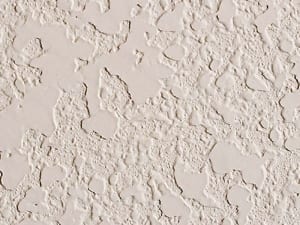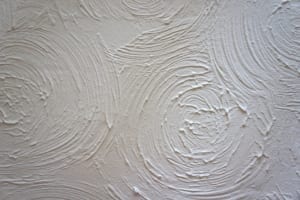
Originally posted on https://www.surepropainting.com/2018/12/07/the-different-types-of-ceiling-textures-you-need-to-know-about/
A ceiling is a ceiling, right?
Well, not quite.
If you’re building, remodeling, or upgrading your home, a bit of research will indicate that there are actually many styles and varieties of ceilings. There are standard drywall ceilings, tin ceilings, drop ceilings, and more.
And, even in the realm of standard ceilings, there are a number of different looks and styles of ceiling textures available. These textures, created using plaster, mud, or other compounds, are an easy way to change the look of a room.
If you’re wondering how (and why!) to add some flair to your new or existing ceilings, keep reading for more information common ceiling texture styles.

1. Flat or Smooth Ceilings
If your house will have sheetrock ceilings, you have the option to leave the ceilings flat (or smooth).
Flat ceilings have a classic and understated look. Unless we’re talking about the Sistine Chapel, ceilings are rarely a focal point in the room. If you really want them to recede and not be a part of your decor, opt for a flat ceiling.
The drawback with flat ceilings is that every imperfection will show. If you live in an older house that you’ve added onto, have had drywall repairs done, or tend to scuff or otherwise mark up your ceiling, a flat or smooth ceiling may not be the best option.
Smooth ceiling textures also require more work. In order to hide the imperfections of construction, more layers of mud and additional sanding is required.

2. Skip Trowel Ceilings
A popular style for textured ceilings, skip trowel gives the ceiling dimension with a subtle “stuccoed” look. Skip trowel texture is hand applied using coarse sand and joint compound. A trowel is then used to spread the compound and create the texture.
Skip trowel is popular in high-end homes for its somewhat-Mediterranean look. If you’re looking for a classy, low-key texture for your ceiling, skip trowel could be the one.

3. Knockdown Ceilings
Knockdown is a texture that’s fairly similar in style to skip trowel. Knockdown texture starts by spraying the ceiling with a watered-down compound. As the compound partially dries, it drips a bit, creating “stalactites.” These stalactites are then scraped away, leaving a stuccoed texture.
Like skip trowel, knockdown is great for concealing minor imperfections or adding some subtle depth to a room. It does require extra labor however to knock down the texture manually with a trowel after the texture is sprayed.
4. Orange Peel Ceilings
Orange peel texture bears some resemblance to – you guessed it – an orange peel.
You get this slightly bumpy but still soft-looking texture by spraying drywall compound onto the ceiling. It’s close to a splattered look but finer. It’s smoother and more subtle than knockdown and is a popular choice for modern homes. It’s also commonly seen in business premises. It provides the look of a textured ceiling while remaining easy to wipe clean as needed.
If you’re erring towards a texture but want a subtle, understated look, orange peel may be the way to go. It is also the easiest and most affordable texture method for ceilings. It is also the most popular choice for drywall texture on walls.

5. Swirled Ceilings
The swirled ceiling texture isn’t seen as often as some of the other textures here, but it’s worth considering. It’s a beautiful, unique look.
Swirled ceilings consist of a pattern of full or half circles, made by “swirling” a tool or sponge through the compound before it sets. The result is a striking “fanned” pattern with an art deco-esque flair.
If you have an older house that you have added onto, the swirled ceiling would add a great, vintage feel to the new addition!

6. Popcorn Ceilings
We’d be remiss if we wrote an article about ceiling textures and didn’t mention the ubiquitous popcorn ceiling.
Popular in many homes built into the 90s, the rough, bumpy look of a popcorn (or cottage cheese) ceiling was a cost-effective way to quickly make a ceiling look uniform.
They have fallen out of favor recently, largely because the texture is difficult to clean. When dust, smoke residue, and cobwebs build up, it can be harder to clean a popcorn ceiling without knocking off some the texture. For that reason, we mostly get requests to remove popcorn ceilings textures and replace them with a different finish.
That being said, the increased surface area of a popcorn ceiling is good for absorbing and muffling sounds (hence their formal name of “acoustic ceiling”). Some people may still choose them in family rooms or other loud spaces for these reasons.
Why Texture a Ceiling at All?
Like everything in a home, the look of the ceiling is a matter of personal taste. Some people like a classic, flat look, others like the dimension that texture provides. It really boils down to what you prefer to look at.
Finishing a perfectly smooth ceiling takes a lot of time and effort. Opting for a textured ceiling can hide minor imperfections, so if you’re adding onto your home and blending new ceiling into old, consider adding a texture. Some textures may also reduce the cost of a ceiling install because it takes less time and fewer trips for the team to texture the drywall than to get it perfectly smooth.
Texture also adds an air of depth and dimension to the room that it wouldn’t otherwise have with a flat ceiling. If you have a large room that gets lots of natural light, a textured ceiling will look different at all hours as the shadows play of the ridges or bumps.
We also recommend painting ceilings with a flat or semi-flat paint sheen which reduces reflections and give the ceiling a softer look.

Need a New Ceiling Texture?
As we said earlier in the article, ceiling looks aren’t quite as cut and dry as you might have assumed. Our experts would love to provide a free estimate and discuss with your options. We also can texture walls and repairs holes and other damage to sheetrock.
Plus, we make your life easier by providing online scheduling, e-mailed estimates, and online payment options.
